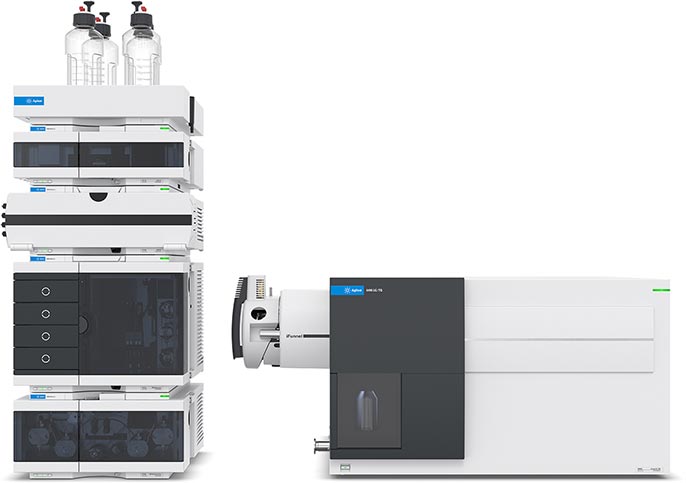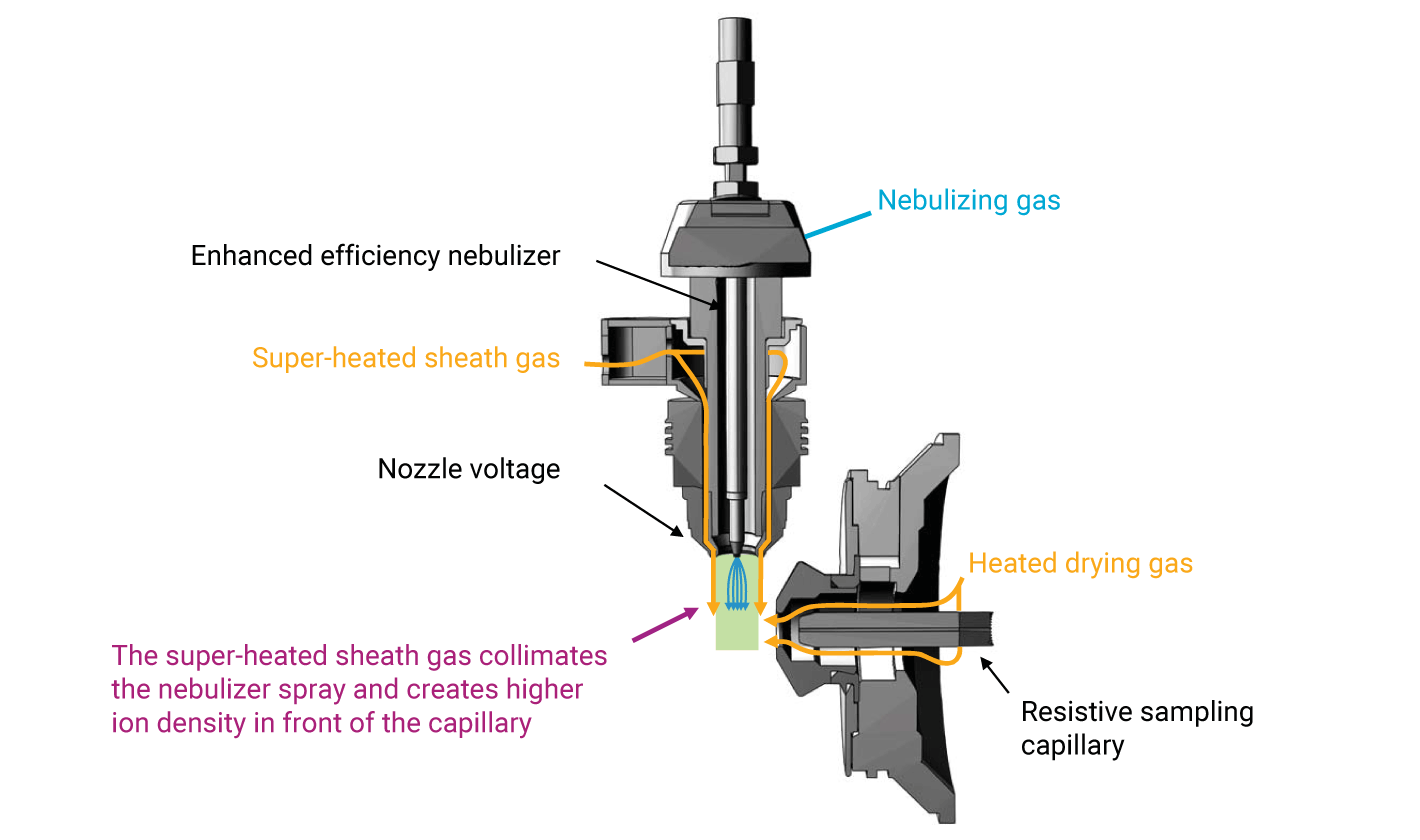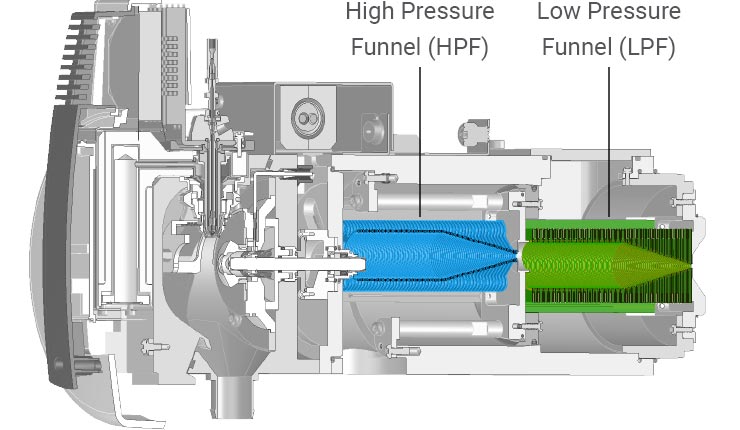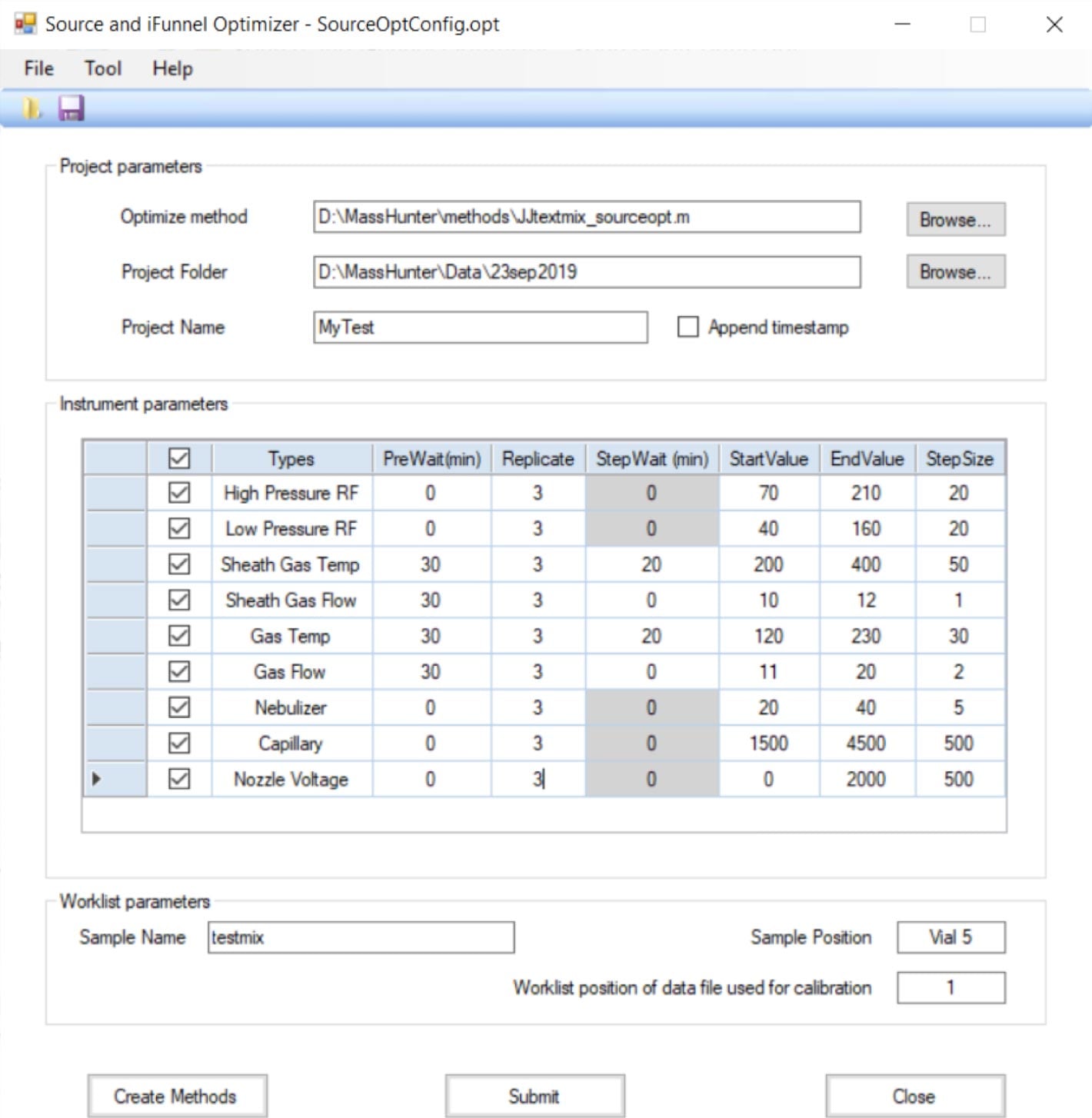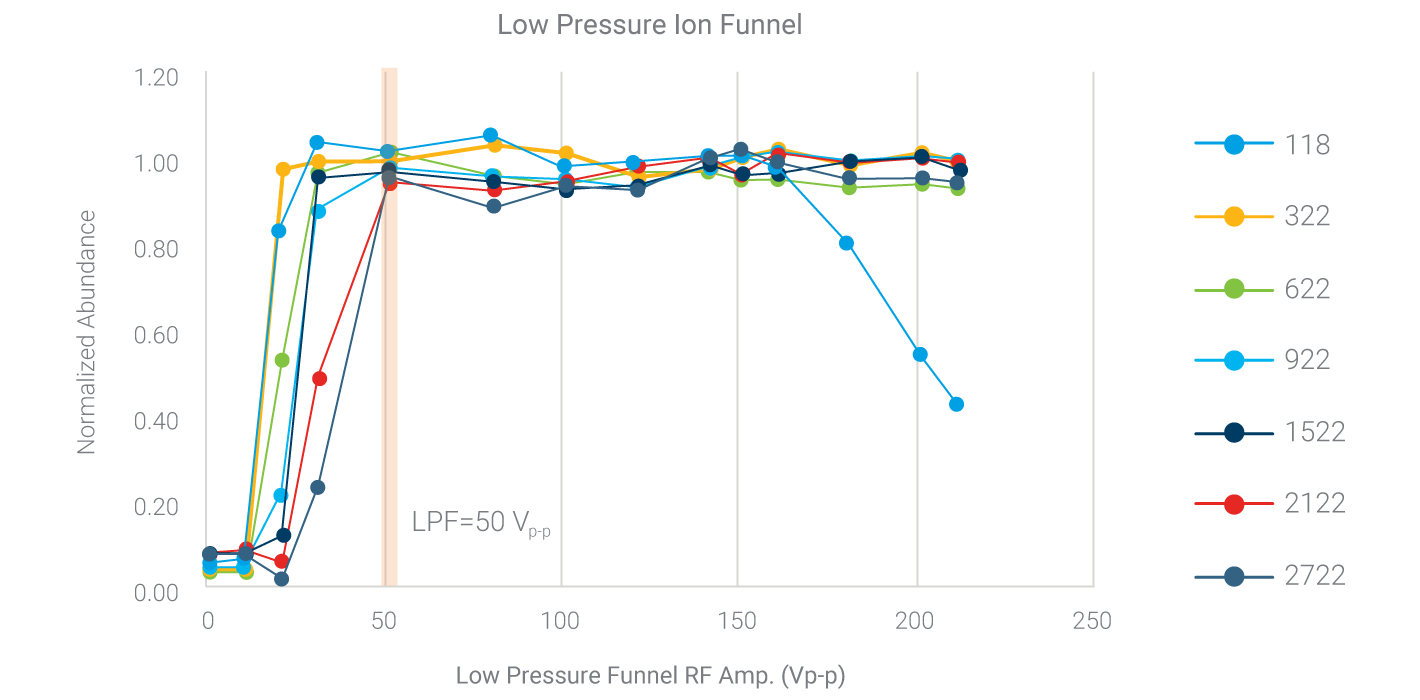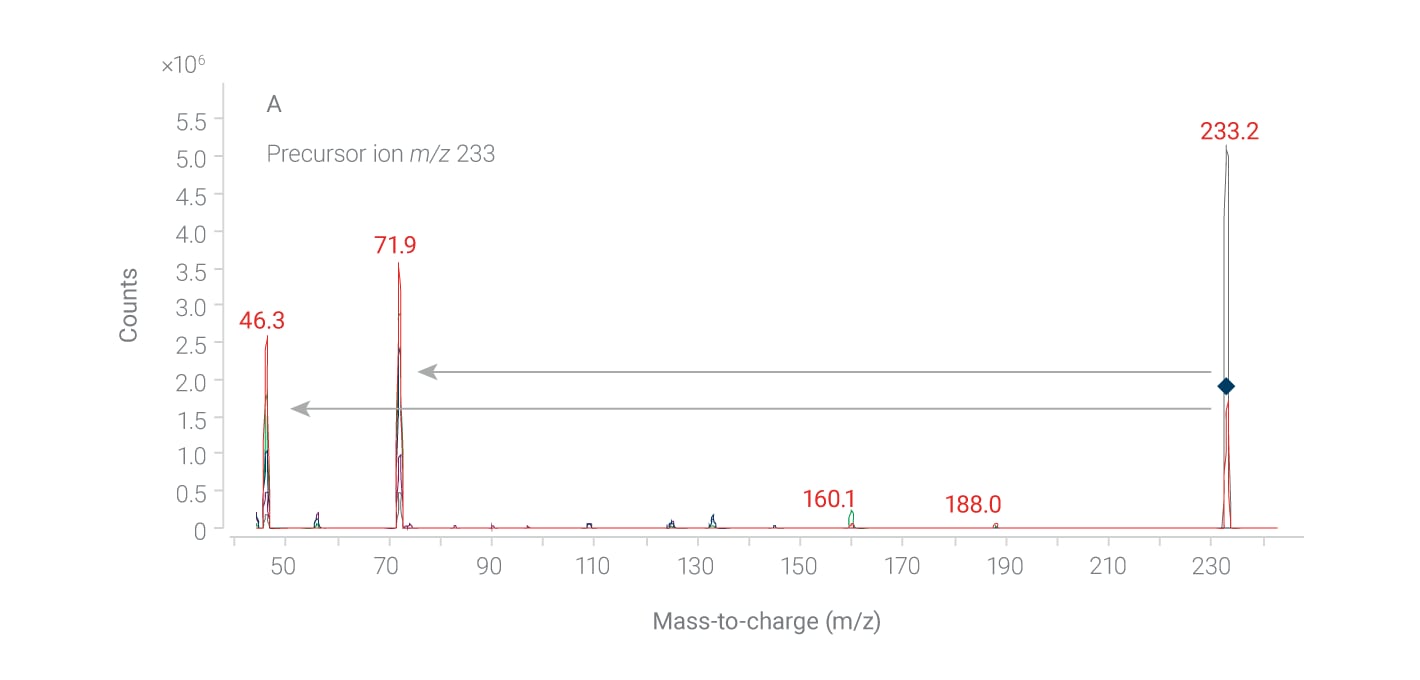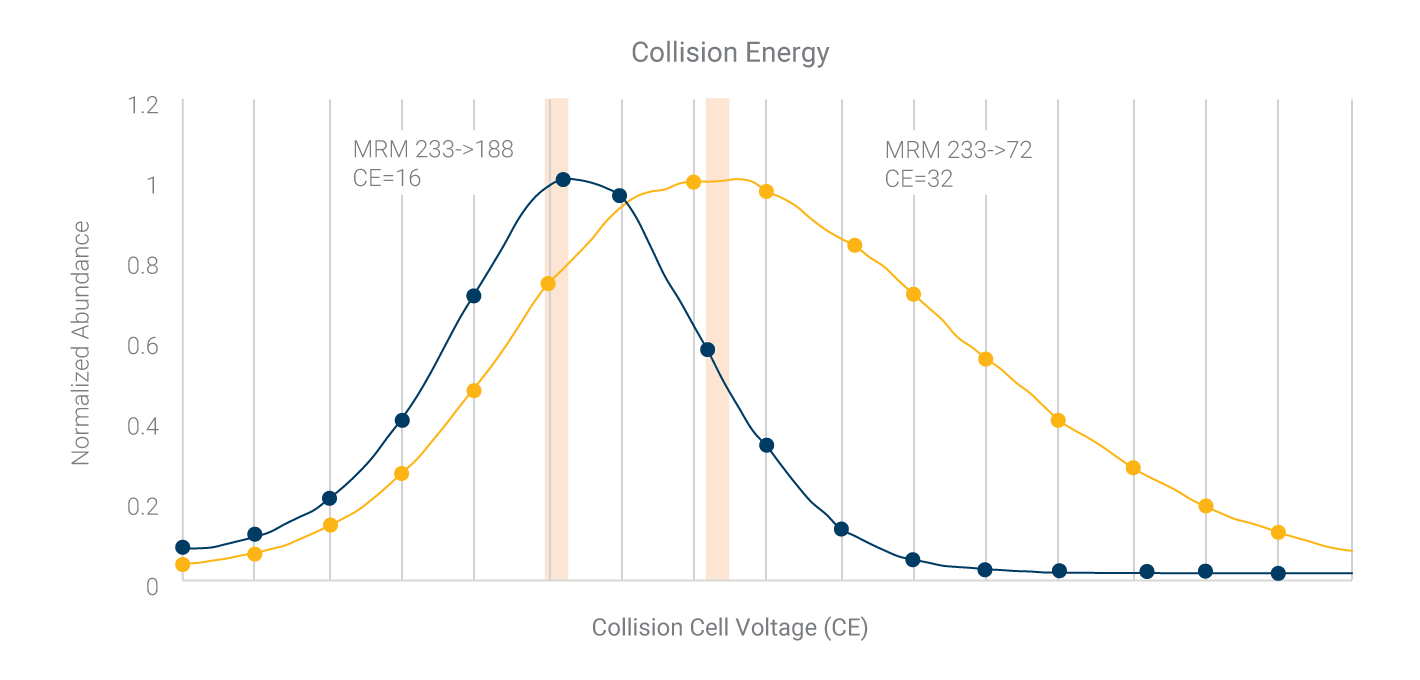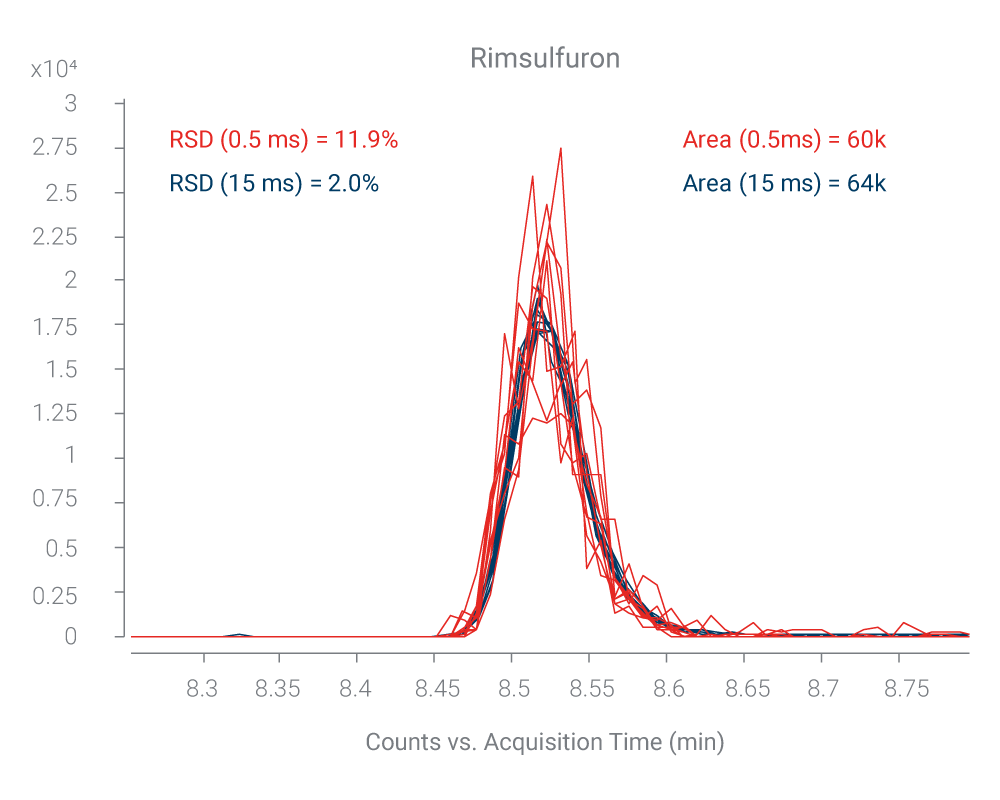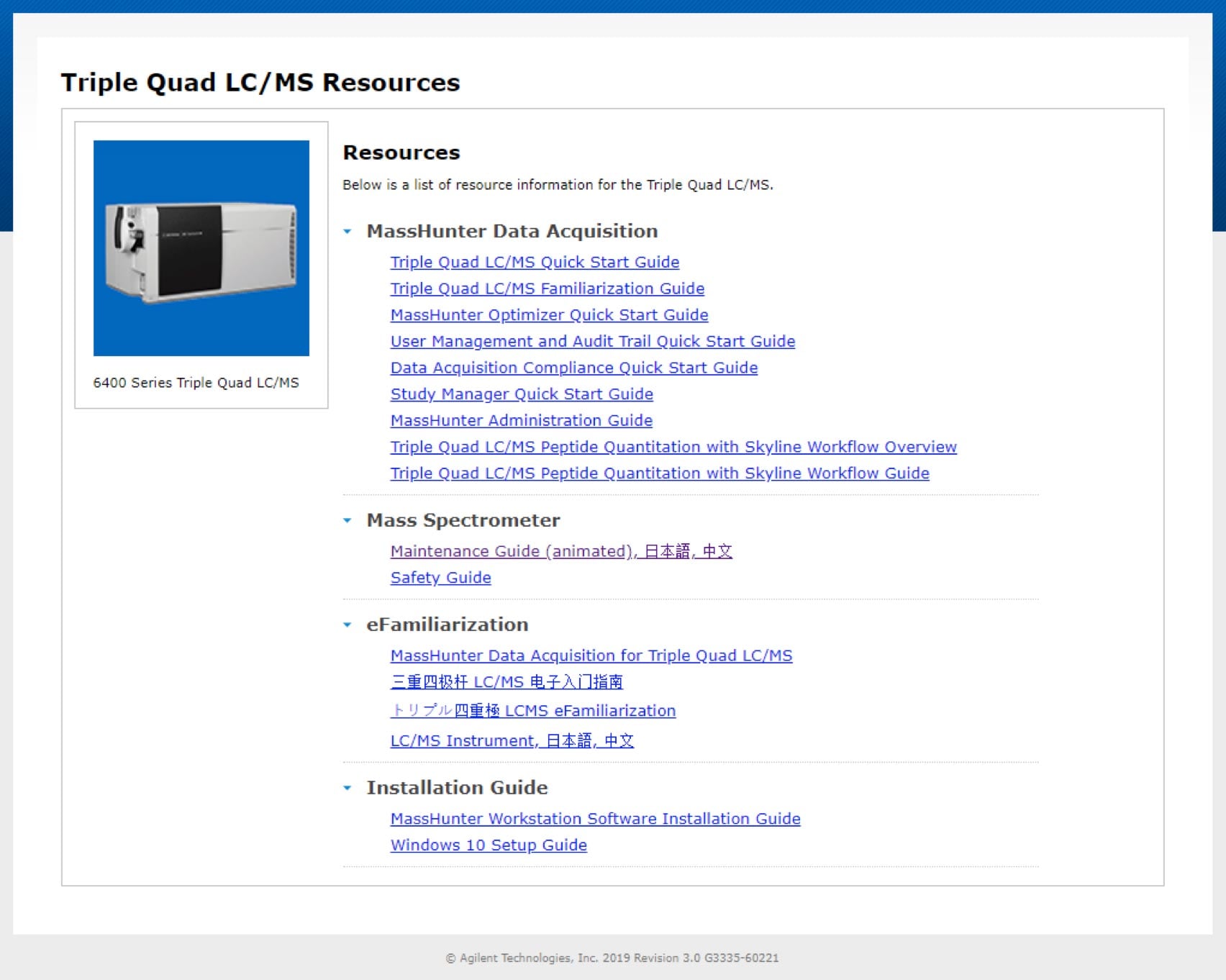Parameter optimization is a lengthy process because you need time between temperature setpoints to achieve full thermal equilibration. Source and iFunnel Optimizer—included with Agilent MassHunter Acquisition software—helps you create and run source parameter ramps.
The software sets the number of replicates per experiment, as well as parameter step size. It also allows you to set the desired time for thermal equilibration. Once all parameters are set, the program creates all methods and runs a worklist with these parameters. You can then analyze each data file to determine the best setpoints.
An appropriate RF amplitude ensures the highest possible transmission efficiency, while minimizing precursor ion fragmentation. Source and iFunnel Optimizer can quickly create high- and low-pressure ramps for easier method development.
Although you can examine the TIC of each voltage setpoint, more information is gained by plotting “Abundance vs RF Amplitude” for the precursor ions of interest. With this plot, you can find the most desirable funnel settings for your method. Keep in mind that an ideal voltage is not always possible. However, we recommend choosing the lowest required high- and low-pressure RF amplitudes that optimize transmission across the m/z range of ions being measured.

